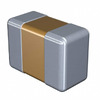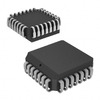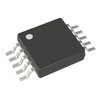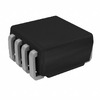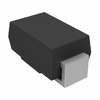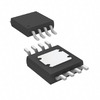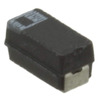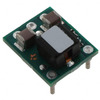TL074 OP-AMP: Features, Pinout, and Datasheet
This article introduces the TL074 operational amplifier, a highly regarded component known for its reliability and precision. Prominent in high-fidelity audio systems, this quad package amplifier excels at delivering clear and pristine tones, enhancing sound quality. Its versatility extends to various analog computing tasks and other applications, supported by its robust design and effective noise suppression capabilities.Catalog

What is the TL074?
The TL074 operational amplifier elegantly merges JFET and bipolar transistors within a singular, compact design. This synthesis is valuable in scenarios requiring both rapid response and steadfast reliability. Its monolithic construction offers uniform conduct and precision across diverse applications. Such architecture cultivates consistent performance, addressing the subtle variations that might otherwise result in inefficiencies.
Within the TL074, the JFET (Junction Field Effect Transistor) component provides superior input impedance, reducing the loading effects on previous stages and preserving signal fidelity. Its low noise output is advantageous in audio processing and precision-driven tasks where pure signals are a top priority. The inclusion of JFETs elevates the op-amp's capacity to manage swift signal fluctuations, suiting it for high-frequency applications.
Conversely, bipolar transistors augment the TL074's capability by ensuring strong output drive for tasks with substantial power demands, like telecommunications signal amplification. This synergy of JFET and bipolar technology delivers a well-rounded performance, providing both delicate responsiveness and robust output. These traits mirror scenarios outside of controlled environments, where responding to shifting conditions with resilience is often a learned necessity.
TL074 Pin Configuration
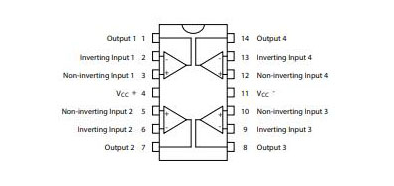
|
Pin Number |
Pin Name |
Description |
|
1, 7, 10, 16 |
Op-Amp Output Pins |
These are the output pins of the four Op-Amps |
|
2, 6, 11, 15 |
Input Inverting Pins |
These are the input inverting pins of the four Op-Amps |
|
3, 5, 12, 14 |
Input Non-Inverting Pins |
These are the input non-inverting pins of the four
Op-Amps |
|
4 |
Vcc (+) |
Positive Supply Rail of the Op-Amp |
|
13 |
Vcc (-) |
Negative Supply Rail of the Op-Amp |
TL074 Symbol, Footprint, and CAD Model
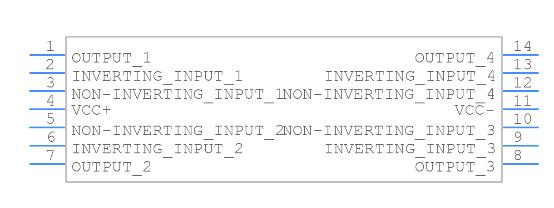


Features of the TL074 Operational Amplifier
• Wide common-mode voltage range for versatile signal handling.
• Minimal offset and low bias current for precise operation.
• Low noise (15 nV/√Hz) for audio and sensitive signals.
• Short-circuit protection ensures consistent performance.
• High input impedance (JFET design) maintains signal integrity.
• Low harmonic distortion (0.01%) for clean audio and precision work.
• Built-in frequency compensation prevents operational issues.
• High slew rate (16 V/µs) for fast, accurate signal transitions.
Applications of the TL074
Role in Circuits Requiring High Input Impedance
The TL074 operational amplifier finds its place in circuits where high input impedance is sought after. Its design caters to applications such as buffers, maintaining signal fidelity while minimizing current draw. Furthermore, in filters and integrators, its precision is evident as it refines frequency responses and reduces noise, a boon for audio processing and scientific instrumentation.
Adaptability in Dynamic Systems
In the realm of dynamic systems, including differentiators and voltage followers, the TL074 showcases stability and precision. Differentiators benefit from its ability to manage rapid input signal changes, an asset for systems dependent on data adaptation. Voltage followers appreciate its impedance matching and signal buffering, ensuring seamless sensor interfacing and efficient communication circuitry.
Contribution to DC Gain Blocks and Comparators
Extending its utility to DC gain blocks, the TL074 amplifies low-level signals with minimal distortion, supporting sensors and data acquisition systems. As a comparator, especially in control loops and regulatory scenarios, it provides precise threshold detection, an asset in power management and automated control systems, promoting reliability and efficiency under exhaustive control conditions and energy considerations.
Equivalent of the TL074
• LM324
TL074 Circuit Diagram
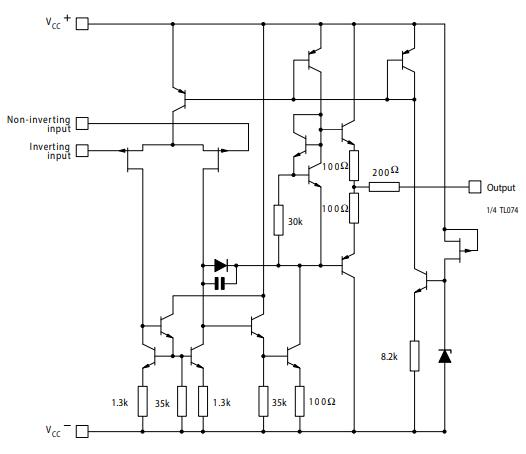
Enhanced Utilization of TL074
The picture below shows the pinout diagram of the TL074 quad operational amplifier, illustrating the configuration of its four amplifiers and corresponding input/output pins.

The TL074 is highly efficient for audio systems requiring quad operational amplifiers. Its mix of high-voltage JFETs and bipolar transistors ensures low noise and clear audio signals. With high input impedance and low bias current, it’s ideal for preamplification, preserving audio purity. Modern audio equipment uses components like the TL074 to deliver rich, detailed sound.
Beyond audio, the TL074 excels in signal processing tasks requiring precision, such as instrumentation and data acquisition. It minimizes distortion and interference, ensuring clean and accurate outputs. This reliability makes it valuable for research, applied sciences, and systems requiring exact signal measurement, even under changing conditions. The TL074 is perfect for noise-sensitive environments like labs or measuring equipment. Its low bias current helps maintain stability and reduces distortion, improving overall system performance.
Guidelines for Utilizing TL074
The TL074 and LM324 are both operational amplifiers but differ mainly in their design; the TL074 uses a JFET input stage. This feature results in higher input impedance and lower input bias current, making it better suited for high-impedance applications like audio and sensors. It also produces less noise, which is advantageous for applications requiring high signal fidelity.
In practical terms, the TL074 is favored in audio processing and instrumentation for its low noise and high slew rate, leading to clearer signals with minimal distortion. Effective use of the TL074 involves careful consideration of power supplies and heat management, with circuit design enhancements like the use of bypass capacitors and appropriate thermal solutions for optimal performance. This component offers flexibility with its JFET inputs, making it adaptable to various signal levels and a valuable tool for electronics.
TL074 Similar Parts
The following components listed below are similar in specifications to those of STMicroelectronics TL074CDT.
|
Part Number |
Manufacturer |
Package / Case |
Number of Pins |
Slew Rate |
Input Offset Voltage (Vos) |
Common Mode Rejection Ratio |
Supply Voltage |
Operating Supply Current |
Technology |
|
TL074CDT |
STMicroelectronics |
14-SOIC (0.154, 3.90mm Width) |
14 |
13V/μs |
3 mV |
70 dB |
15 V |
1.4 mA |
BIPOLAR |
|
LM224ADR |
Texas Instruments |
14-SOIC (0.154, 3.90mm Width) |
14 |
16V/μs |
10 mV |
70 dB |
15 V |
1.4 mA |
BIPOLAR |
|
TL074IDT |
STMicroelectronics |
14-SOIC (0.154, 3.90mm Width) |
14 |
16V/μs |
10 mV |
80 dB |
15 V |
1.4 mA |
BIPOLAR |
|
TL084IDT |
STMicroelectronics |
14-SOIC (0.154, 3.90mm Width) |
14 |
13V/μs |
3 mV |
80 dB |
15 V |
1.4 mA |
BIPOLAR |
|
LF347DT |
STMicroelectronics |
14-SOIC (0.154, 3.90mm Width) |
14 |
0.5V/μs |
3 mV |
70 dB |
5 V |
1.4 mA |
BIPOLAR |
TL074 Technical Specifications
Technical specifications, characteristics, and parameters of the TL074, along with components that share similar specifications to the STMicroelectronics TL074CDT.
|
Type |
Parameter |
|
Lifecycle Status |
ACTIVE (Last Updated: 6 months ago) |
|
Mount |
Surface Mount |
|
Package / Case |
14-SOIC (0.154, 3.90mm Width) |
|
Operating Temperature |
0°C~70°C |
|
Series |
Automotive, AEC-Q100 |
|
Part Status |
Active |
|
Number of Terminations |
14 |
|
Terminal Finish |
Matte Tin (Sn) - annealed |
|
Terminal Position |
DUAL |
|
Peak Reflow Temperature (Cel) |
260 |
|
Supply Voltage |
15V |
|
Time@Peak Reflow Temperature-Max (s) |
30 |
|
Pin Count |
14 |
|
Number of Channels |
4 |
|
Nominal Supply Current |
2.5mA |
|
Output Current |
40mA |
|
Factory Lead Time |
10 Weeks |
|
Mounting Type |
Surface Mount |
|
Number of Pins |
14 |
|
Packaging |
Cut Tape (CT) |
|
JESD-609 Code |
e3 |
|
Moisture Sensitivity Level (MSL) |
1 (Unlimited) |
|
ECCN Code |
EAR99 |
|
Packing Method |
TAPE AND REEL |
|
Terminal Form |
GULL WING |
|
Number of Functions |
4 |
|
Terminal Pitch |
1.27mm |
|
Base Part Number |
TL074 |
|
Power Supplies |
±15V |
|
Operating Supply Current |
1.4mA |
|
Power Dissipation |
680mW |
|
Slew Rate |
13V/μs |
|
Architecture |
VOLTAGE-FEEDBACK |
|
Common Mode Rejection Ratio |
70 dB |
|
Voltage - Supply, Single/Dual (±) |
6V36V ±3V±18V |
|
Input Offset Voltage (Vos) |
3mV |
|
Unity Gain BW-Nom |
3000 kHz |
|
Average Bias Current-Max (IIB) |
0.02μA |
|
Frequency Compensation |
YES |
|
Low-Bias |
YES |
|
Dual Supply Voltage |
9V |
|
Input Offset Current-Max (IIO) |
0.01μA |
|
Length |
8.75mm |
|
REACH SVHC |
No SVHC |
|
RoHS Status |
ROHS3 Compliant |
|
Amplifier Type |
J-FET |
|
Current - Input Bias |
20pA |
|
Output Current per Channel |
40mA |
|
Neg Supply Voltage-Nom (Vsup) |
-15V |
|
Voltage Gain |
106.02dB |
|
Low-Offset |
NO |
|
Supply Voltage Limit-Max |
18V |
|
Bias Current-Max (IIB) @25C |
0.0002μA |
|
Neg Supply Voltage-Max (Vsup) |
-18V |
|
Height |
1.65mm |
|
Width |
4mm |
|
Radiation Hardening |
No |
|
Lead Free |
Lead Free |
Package for TL074

TL074 Manufacturer Information
STMicroelectronics leads the charge in semiconductor technology, demonstrating a expertise in silicon mastery alongside an extensive array of manufacturing talents. The company thrives by establishing a dynamic ecosystem of strategic collaborations, propelling the limits of integrated circuit and System-on-Chip (SoC) technologies. This strategic focus firmly establishes its influential role and shapes the wider electronics arena. STMicroelectronics' dominance in semiconductor technology stems not only from its existing capabilities but also from strategic foresight and collaborative efforts. Through innovation and alliance formation, they play an important role in defining the technological future.
Datasheet PDF
TL074CDT Datasheets:
TL074IDT Datasheets:
TL084IDT Datasheets:
LF347DT Datasheets:
About us
ALLELCO LIMITED
Read more
Quick inquiry
Please send an inquiry, we will respond immediately.
Frequently Asked Questions [FAQ]
1. What is TL074?
The TL074 is an advanced JFET input, quad operational amplifier that skillfully melds JFET and bipolar transistors. Its sophisticated design bestows characteristics for intricate electronic tasks, such as audio processing and instrumentation. The passion for high-quality sound drives audio to explore these features.
2. Is TL074 a rail to rail op-amp?
While the TL074 lacks rail-to-rail capabilities, the output voltage falls short of spanning the entire power supply at its peak. Many often navigate this constraint by calibrating the operational voltage range to align with desired output dynamics. Those involved in audio amplification may find themselves challenged yet inspired to configure their systems, seeking an optimal balance despite limited headroom, motivated by a quest for superior sound quality.
3. How much voltage to turn on tl074 op-amp?
Operating within a wide supply range of (±)6V to 36V or ±3V to 18V, the TL074 presents versatility for various applications, from low-voltage battery setups to robust power systems. Those familiar with modular synth designs appreciate this adaptability, strategically manipulating the range to enhance performance across different voltage scenarios. A sense of creativity fuels to exploit these varying conditions, crafting unique soundscapes and rich audio textures.
4. What does an op amp do?
An op-amp excels at amplifying weak electrical signals through its dual inputs and single output, enhancing the voltage difference between inputs. This amplification is important in analog signal processing, where precise signal strengthening is needed. Audio engineering rely on this capability to elevate signal fidelity, channeling the attributes of the op-amp to refine audio outputs. The joy of achieving pristine sound quality drives this enhancement effort.
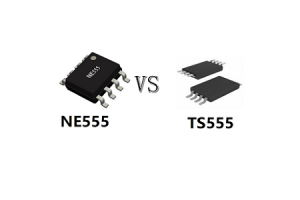
Comparing Power Efficiency: NE555 vs. TS555
on November 19th

Understanding the IRFP240 MOSFET
on November 19th
Popular Posts
-

What is GND in the circuit?
on January 1th 3328
-

RJ-45 Connector Guide: RJ-45 Connector Color Codes, Wiring Schemes, R-J45 Applications, RJ-45 Datasheets
on January 1th 2854
-

Understanding Power Supply Voltages in Electronics VCC, VDD, VEE, VSS, and GND
on November 21th 2791
-

Fiber Connector Types: SC Vs LC And LC Vs MTP
on January 1th 2284
-

Comparison Between DB9 and RS232
on January 1th 1901
-

What Is An LR44 Battery?
Electricity, that ubiquitous force, quietly permeates every aspect of our daily lives, from trivial gadgets to life-threatening medical equipment, it plays a silent role. However, truly grasping this energy, especially how to store and efficiently output it, is no easy task. It is against this background that this article will focus on a type of coin cell battery that may seem insignificant on the...on January 1th 1858
-

What Is RF and Why Do We Use It?
Radio Frequency (RF) technology is a key part of modern wireless communication, enabling data transmission over long distances without physical connections. This article delves into the basics of RF, explaining how electromagnetic radiation (EMR) makes RF communication possible. We will explore the principles of EMR, the creation and control of RF signals, and their wide-ranging uses. The article ...on January 1th 1845
-

Understanding the Fundamentals:Inductance Resistance, andCapacitance
In the intricate dance of electrical engineering, a trio of fundamental elements takes center stage: inductance, resistance, and capacitance. Each bears unique traits that dictate the dynamic rhythms of electronic circuits. Here, we embark on a journey to decipher the complexities of these components, to uncover their distinct roles and practical uses within the vast electrical orchestra. Inductan...on January 1th 1831
-

CR2430 Battery Comprehensive Guide: Specifications, Applications and Comparison to CR2032 Batteries
What is CR2430 battery ?Benefits of CR2430 BatteriesNormCR2430 Battery ApplicationsCR2430 EquivalentCR2430 VS CR2032Battery CR2430 SizeWhat to look for when buying the CR2430 and equivalentsData Sheet PDFFrequently Asked Questions Batteries are the heart of small electronic devices. Among the many types available, coin cells play a crucial role, commonly found in calculators, remote controls, and ...on January 1th 1827
-

Comprehensive guide to hFE in transistors
Transistors are crucial components in modern electronic devices, enabling signal amplification and control. This article delves into the knowledge surrounding hFE, including how to select a transistor's hFE value, how to find hFE, and the gain of different types of transistors. Through our exploration of hFE, we gain a deeper understanding of how transistors work and their role in electronic circu...on November 21th 1823
















